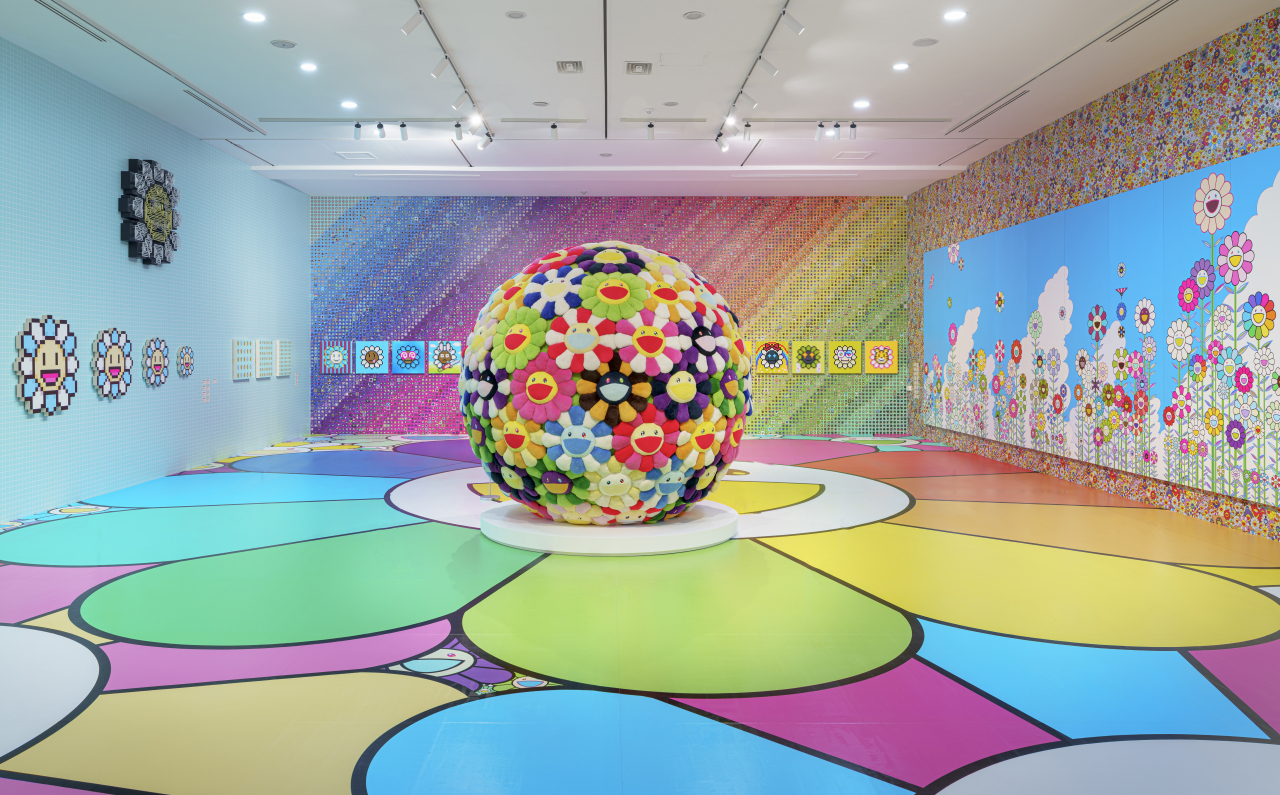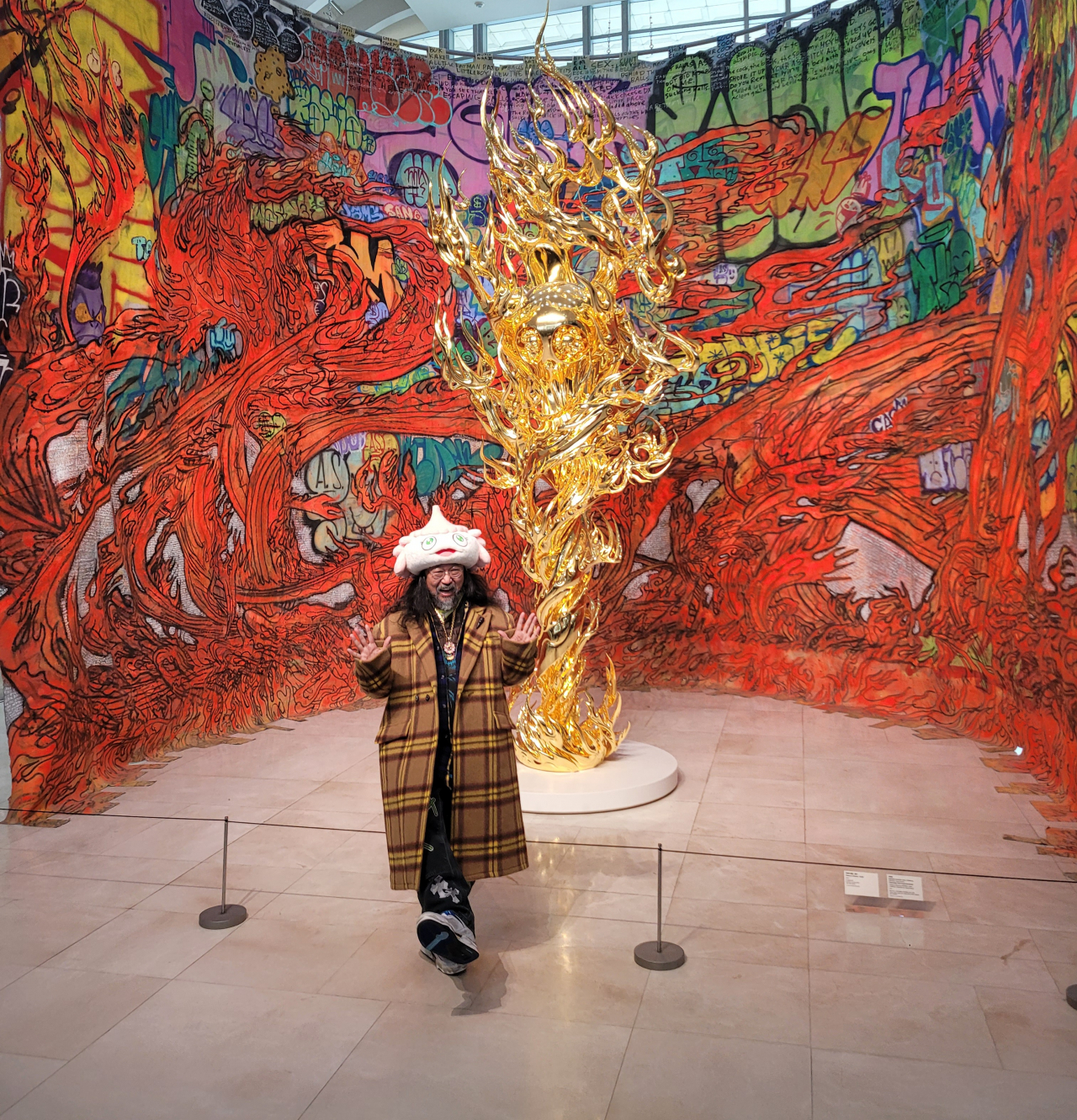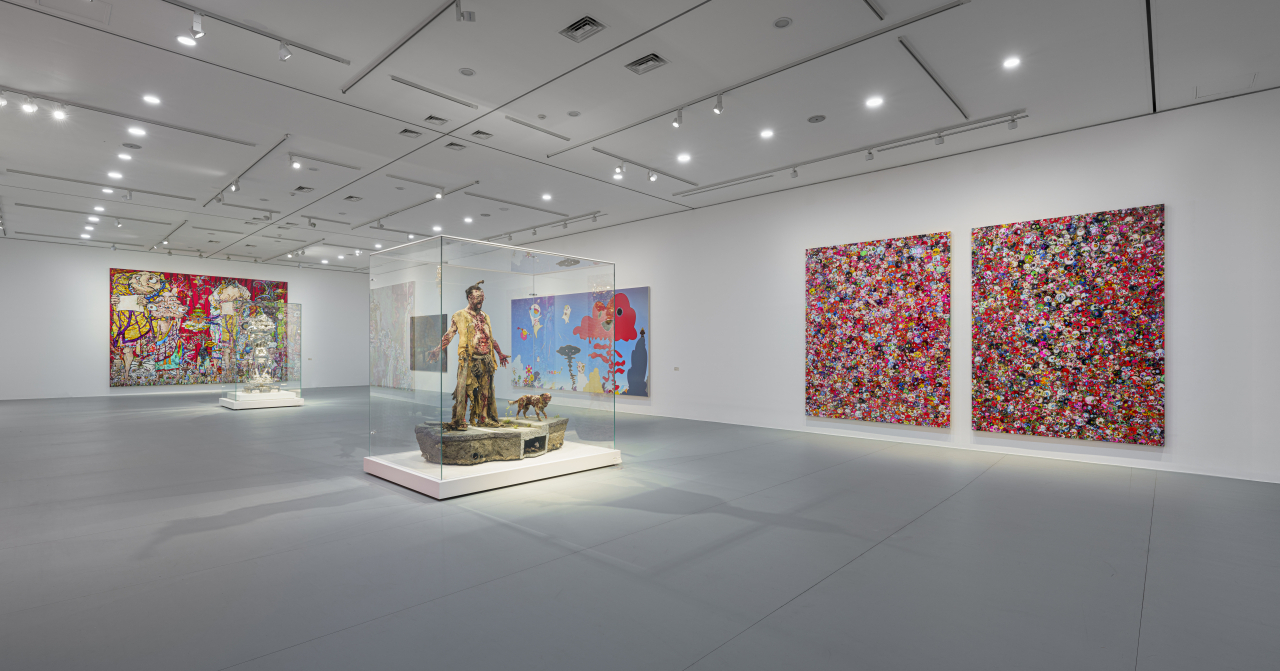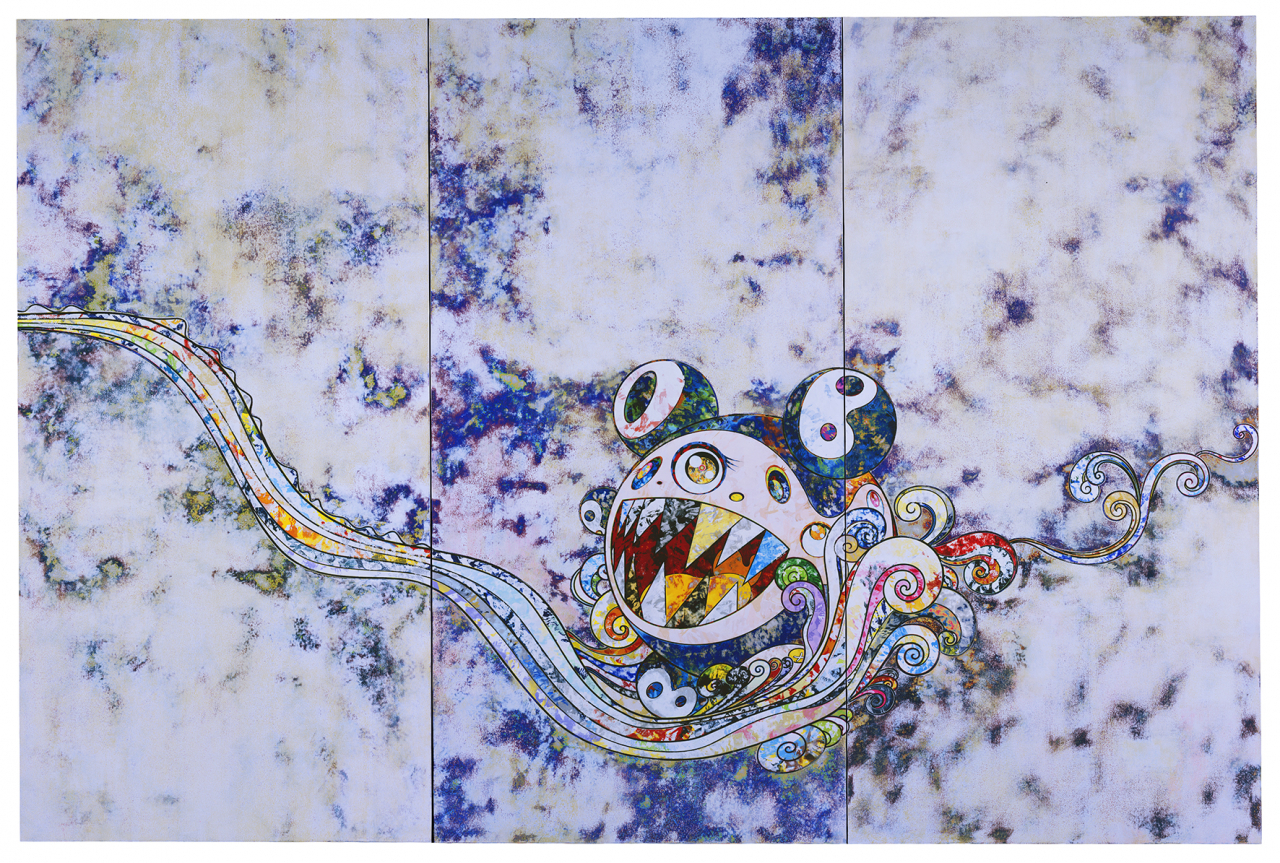
BUSAN -- Japanese leading contemporary artist Takashi Murakami showed up in South Korea’s southern port city of Busan for his first exhibition in the country in 10 years. Inspired by Japan’s “otaku” subculture, his art may look bright and “kawaii,” cute in Japanese, at first glance. However, its content is more profound than what first meets the eye.
Otaku is a Japanese word that refers to people with an obsessive interest in particular subjects such as animation, manga or games. Murakami is known for bringing the Japanese subculture to the global art scene, blurring the boundary of high and low art.

The 60-year-old artist came up to the stage at the Busan Museum of Art wearing a headpiece of a jellyfish character named Kurage-bo for a press conference on Thursday. When posing for photos, he lightheartedly kicked up a leg with a smile, triggering camera flashes and laughter from the press.
The jellyfish character is from the artist’s 2013 fantasy film, “Jellyfish Eyes,” his debut feature film after the 9.0 magnitude earthquake in Japan that claimed 16,000 deaths in 2011. In “Jellyfish Eyes,” the character Kurage-bo befriends a boy who lost his father, but acts cheerful for the sake of his mother.
The devastating natural disaster was an “aha moment” for the artist in understanding why humans seek religion.

He used to be a believer of the so-called new religions in Japan, following his parents as a child, but he started to realize something was wrong when he turned 20. He left the religious group, being skeptical about religion altogether. In Japan, a number of religions exist -- for Buddhism alone, there are 500 arahants, meaning 500 gods are believed to exist, Murakami said.
“But I realized why people seek for a god. When they are deadly miserable and lost in panic, people need to find comfort. I realized that is the point of religion (from the 2011 earthquake). When it comes to natural disasters, you don’t even have a counterpart to blame,” he said.
Murakami said he was inspired to make the film when he saw someone telling a boy on television that his mother, a victim of the 2011 disaster, became a star. This was when the artist “witnessed when a religion begins.”
The retrospective exhibition of the artist “Takashi Murakami: MurakamiZombie” encompasses the artist’s 30 years of career with some 160 works from his early works to the latest. The show is part of the series “Lee Ufan and His Friends,” which shows a serial exhibition of artists invited by renowned contemporary artist Lee Ufan at the Busan Museum of Art where Space Lee Ufan was established in 2015 as an annex to the museum.

Murakami is famous for originating the “Superflat” theory which was influenced by Japanese contemporary anime and traditional art. The concepts highlight the “flatness” of Japanese visual art, which is popularly seen in the artist’s iconic flower works, Mr. DOB and Tan Tan Bo characters.
The painting “727 Dragon” by the artist is part of the collection owned by Korean K-pop star Kwon Ji-yong, also known as G-Dragon from the boy group Big Bang. Kwon is known as an avid art collector and fan of the Japanese artist. The painting combines Mr. DOB, Murakami's signature character he created in 1993, and a wave from Japanese traditional painting.
Another painting, “Sparkle / Tan Tan Bo: Eternity” that features vivid colors and Tan Tan Bo characters as wicked monsters, is on display. The painting's message, behind its bright and cute exterior, provokes the audience to think about the world we are living in.
The exhibition consists of four sections: cuteness, grotesque, pathos and enso. The pathos section features Murakami's recent works inspired by zombies, including his recent sculpture “Murakami Zombie W/ Pom Zombie” that seems to raise awareness of the catastrophic impacts of nuclear power, an issue that the artist has long been outspoken on.
The exhibition runs through March 12.
By Park Yuna (yunapark@heraldcorp.com)





![[Graphic News] More Koreans say they plan long-distance trips this year](http://res.heraldm.com/phpwas/restmb_idxmake.php?idx=645&simg=/content/image/2024/04/17/20240417050828_0.gif&u=)